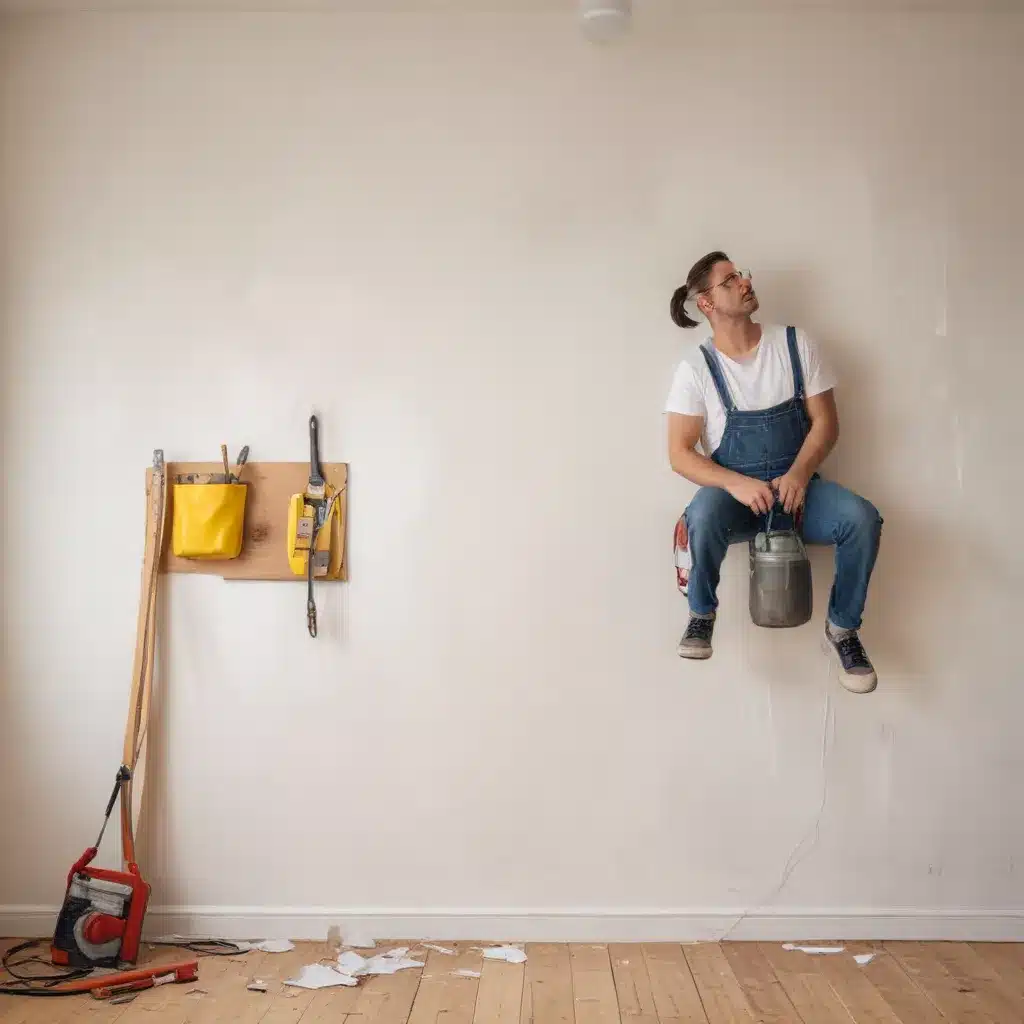
As an experienced home improvement consultant, I’ve seen it all – from ambitious DIY projects that transform a space to well-intentioned efforts that end up causing more problems than they solve. The decision to tackle a home repair yourself or hire a professional is not always straightforward, but it’s a crucial one that can significantly impact your budget, timeline, and final results.
Common DIY Repairs
For many homeowners, the appeal of a DIY approach lies in the potential to save money and the satisfaction of completing a project with their own hands. Common DIY-friendly tasks often include:
- Replacing light fixtures, faucets, and other basic plumbing or electrical work
- Painting walls, trim, and ceilings
- Installing laminate, vinyl, or tile flooring
- Hanging shelves, curtain rods, and other light-duty wall mounting
- Unclogging drains and performing basic HVAC maintenance
- Repairing drywall and applying joint compound for a smooth finish
These types of projects typically require minimal specialized tools and can be learned through tutorials or with the guidance of more experienced DIYers. Tackling them yourself can be a great way to develop practical skills while keeping your renovation budget in check.
Assessing Project Difficulty
Not all home repairs are created equal, however. When considering a DIY approach, it’s essential to carefully assess the difficulty and potential risks involved. Some key factors to consider include:
- Level of Expertise Required: Tasks like rewiring electrical panels, replacing load-bearing structural components, or performing complex plumbing work often require specialized skills and licensing that the average homeowner may not possess.
- Safety Concerns: Certain repairs, such as asbestos removal or working with natural gas lines, pose significant health and safety risks if not handled properly.
- Potential for Damage: Improper installation or execution of a project can lead to water damage, structural issues, or other costly problems down the line.
If a repair falls into a high-risk or highly technical category, it’s generally advisable to consult with a licensed and insured professional instead of attempting a DIY fix.
Prioritizing Home Repairs
When faced with a long list of home improvement needs, it’s crucial to prioritize which tasks to tackle first. Urgent issues, such as leaks, electrical hazards, or structural problems, should take precedence over purely cosmetic concerns.
Urgent vs. Cosmetic Issues
Urgent repairs often require immediate attention to prevent further damage or ensure the safety and functionality of your home. These might include repairing a leaky roof, fixing a broken water heater, or addressing significant foundation cracks. Cosmetic issues, while important for improving the look and feel of your living space, can typically wait until your budget and schedule allow.
Budgeting for Repairs
Allocating funds for home repairs can be a challenge, but it’s essential to have a realistic understanding of the costs involved. Create a detailed budget that accounts for material expenses, labor costs (if hiring a contractor), and any necessary permits or inspections. Consider setting aside a portion of your monthly budget for a home maintenance fund to tackle smaller issues before they escalate.
Scheduling Work
Carefully plan the timing of your home improvement projects to minimize disruption to your daily life. Factor in lead times for materials, the availability of contractors, and the estimated duration of each task. Tackling multiple related projects simultaneously can sometimes be more efficient than spreading them out over an extended period.
DIY Repair Skills
For homeowners interested in taking a hands-on approach, building a basic toolbox and learning fundamental repair techniques can be highly beneficial. Start by acquiring essential tools such as a hammer, screwdrivers, pliers, a tape measure, and a utility knife. Familiarize yourself with common DIY skills like patching drywall, caulking, and using power tools safely.
Fundamental Techniques
As you gain experience, expand your skillset to include more advanced techniques, such as laying hardwood or tile flooring, installing kitchen cabinets, or troubleshooting electrical issues. Refer to instructional videos, DIY guides, and online tutorials to learn proper methods and avoid common pitfalls.
Troubleshooting Strategies
When faced with a home repair challenge, approach it systematically. Carefully diagnose the problem, research potential solutions, and test your hypotheses before committing to a course of action. Don’t be afraid to ask for help from experienced DIYers or professionals if you encounter an issue that’s beyond your current capabilities.
Hiring Professional Help
While DIY projects can be rewarding and cost-effective, there are times when enlisting the expertise of a licensed and insured contractor is the wisest decision. This is particularly true for high-stakes repairs or complex tasks that require specialized skills or equipment.
Identifying the Right Contractor
When searching for a qualified professional, look for credentials such as licenses, insurance, and positive customer reviews. Ask for references and check that the contractor’s scope of work and pricing align with your project requirements.
Obtaining Estimates and Quotes
Gather multiple estimates to ensure you’re getting a fair and competitive price. Be wary of suspiciously low bids, as they may indicate substandard workmanship or unexpected hidden costs. Carefully review the details of each proposal, including the timeline, warranty information, and any eco-friendly materials or energy-efficient solutions the contractor may recommend.
Managing the Repair Process
Once you’ve hired a contractor, maintain open communication throughout the project. Establish clear expectations, timelines, and milestones to ensure the work is progressing as planned. Regularly inspect the quality of the work and address any concerns promptly to avoid delays or unsatisfactory results.
Whether you decide to tackle a home repair yourself or enlist professional help, the key is to approach the project with a well-informed, strategic mindset. By carefully evaluating the scope of work, your own skills and resources, and the potential risks involved, you can make the best decision for your home, your budget, and your family’s needs.
For more home improvement inspiration and renovation guidance, be sure to visit Reluctant Renovator, where our experienced team offers a wealth of budget-friendly, eco-conscious, and family-friendly solutions to transform your living space.



